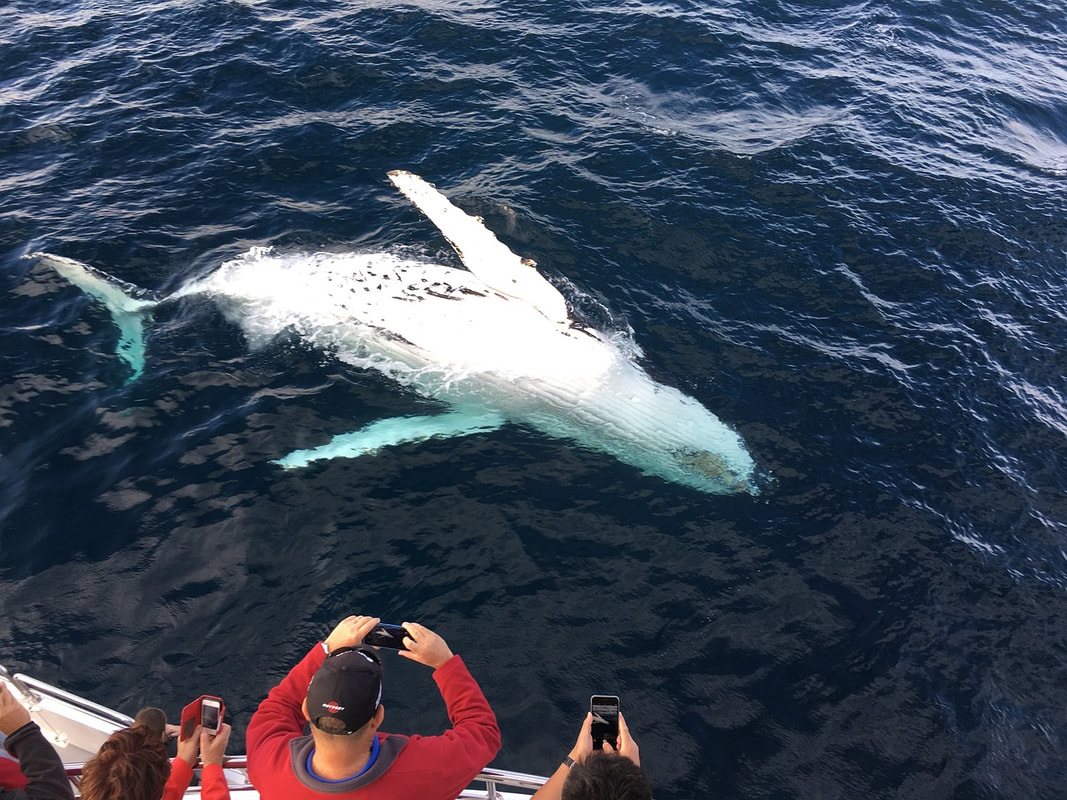|
Hawaii is a paradise for nature lovers, especially those who want to see the majestic humpback whales visiting the islands yearly. From November to May, thousands of whales migrate from Alaska to Hawaii to breed and give birth in the warm and shallow waters. This is the best time for whale watching in Hawaii, as you can witness their unique behaviors and learn about their cultural significance. Why do whales come to HawaiiHumpback whales are one of the most endangered species in the world, with only about 80,000 left in the wild. They spend most of their lives in the cold waters of the North Pacific, where they feed on krill and small fish. However, they embark more than 3,000 miles every winter to reach Hawaii, where they find a safe and comfortable environment to mate and raise their young. Hawaii is ideal for humpback whales because it has warm water temperatures, calm seas, and no predators. The whales can also communicate with each other using their complex songs, which can travel for miles underwater. The pieces are used by males to attract females and to establish dominance over other males. Each humpback whale population has its particular song, which changes every year. Where can you see whales in Hawaii?Humpback whales can be seen from all Hawaiian islands, but the best place to see them is in the Auau Channel between Maui, Molokai, and Lanai. This area has the highest concentration of whales in Hawaii, as it offers them plenty of food and shelter. You can also spot whales from the southern shores of Oahu, especially at Makapuu Lighthouse and along the seaside overlooks near Diamond Head. Kauai also has a range of whale-viewing spots, including Poipu Beach on the South Shore, Kilauea Lighthouse on the North Shore, and Kapaa Overlook on the island’s Coconut Coast. On the island of Hawaii, whales are often seen along the shores of the Kohala Coast and Hilo Bay on the east side of the island. How can you watch whales in Hawaii?There are many ways to watch whales in Hawaii, depending on your preference and budget. The most popular method is to join a boat tour that takes you close to where the whales are. Dozens of tour operators offer whale-watching cruises, ranging from large catamarans to small zodiacs. Some tours even include snorkeling or kayaking activities that allow you to experience marine life up close. If you prefer to stay on land, you can still enjoy whale watching from many scenic spots along the coast. You will need a pair of binoculars or a camera with a zoom lens to get a better view of the whales. You can also listen to their songs using a hydrophone, a device that picks up underwater sounds. Another option is to join a whale-watching festival or event that celebrates the arrival of the whales. These events usually include educational talks, cultural performances, art exhibits, and fun activities for all ages. Some examples are Whale Fest Maui, Whale Tales, and World Whale Day. What can you expect to see when whale watching in Hawaii?Whale watching in Hawaii is an unforgettable experience that will leave you in awe of these gentle giants. You can expect to see different behaviors showcasing their intelligence and personality. Some of these behaviors are:
Whale watching season in Hawaii is a beautiful opportunity to see humpback whales in their natural habitat and learn about their amazing behaviors and culture. By following these tips and facts, you can make the most of your whale watching experience. If you are interested in booking a private tour with us, please contact us today, and we will arrange a customized itinerary for you. Don’t miss this chance to witness one of Earth's most incredible wildlife spectacles!
0 Comments
Your comment will be posted after it is approved.
Leave a Reply. |
HAWAII PRIVATE TOURSTHINGS TO DO ON OAHU! Categories
All
|
LOCATION |
CUSTOMER REVIEWS |
CONTACT US+1(808)9893220© 2009-2023 HI Private Tours All Rights Reserved.
|


 RSS Feed
RSS Feed
